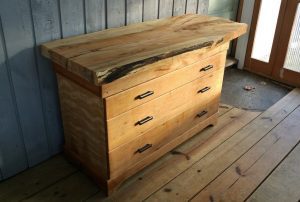Where Does Tiger Maple Plywood Come From?
Maple trees grow across Asia, Europe, northern Africa, and North America, meaning Tiger Maple can be sourced from various regions worldwide. Unlike some specialty woods, Tiger Maple doesn’t come from a specific maple species—it’s simply a natural variation occurring in different maple trees.
Tiger Maple Plywood is available at many hardware stores, specialty lumber suppliers, and online retailers. In some cases, buyers may have the opportunity to purchase directly from growers or manufacturers. However, it’s important to note that quality can vary significantly. Higher-grade Tiger Maple Plywood, with more pronounced grain patterns and fewer imperfections, will come at a premium price compared to lower-grade options.
When purchasing, consider both the aesthetic appeal and the quality to ensure you get the best material for your project.
Description:
Tiger Maple Plywood is popular for woodworkers and designers looking for a unique, eye-catching finish. Known for its distinctive wavy-grain pattern, this plywood adds a touch of elegance to furniture, cabinets, and decorative projects. Beyond its beauty, it offers durability and versatility, making it an excellent option for professionals and DIY enthusiasts. Whether crafting fine furniture or accenting interior spaces, Tiger Maple Plywood delivers style and strength.
Furthermore, the Tiger Maple is not a specific type of tree. This pattern occurs randomly in several species of Maple trees and is often unnoticeable until the tree is cut. Some trees have also shown a ripple pattern in their bark.
Tiger Maple is also a type of hardwood that can be very durable, although its curly, wavy grain can make it a bit more unsteady than straight-grained plywood. Overall, though, this plywood is strong and a favorite for many.
Why Choose Tiger Maple Plywood for Your Next Project?
Tiger Maple Plywood isn’t just about aesthetics—it’s a practical choice for various woodworking projects. Its unique grain pattern makes each piece one of a kind, adding character to furniture, cabinetry, and decorative accents. Beyond its beauty, this plywood is strong and easy to work with, offering excellent stability for both small and large projects. Whether you’re a professional woodworker or a DIY enthusiast, Tiger Maple Plywood perfectly balances elegance and functionality.
Important Considerations When Using Tiger Maple Plywood</p>
While Tiger Maple Plywood is admired for its distinctive wavy grain and visual appeal, there are a few factors to keep in mind before using it in a project.
- Stability Concerns: Tiger Maple’s wavy grain makes it less stable than straight-grained woods. While it works well for furniture and musical instruments, it isn’t ideal for projects requiring heavy durability or wear and tear resistance.
- Finishing Challenges: This plywood can be tricky to finish, especially when staining. While Gibson’s iconic “cherry-red sunburst” finish on their guitars worked well, achieving an even stain can be difficult. Using a pre-stain conditioner can help prevent blotchy patches.
- Environmental Sensitivity: Like all maple woods, Tiger Maple is prone to shrinking over time, especially if exposed to fluctuating temperatures and humidity. Proper care and storage can help maintain its integrity.
Despite these challenges, with the proper techniques and precautions, Tiger Maple Plywood remains an excellent choice for stunning, high-end woodworking projects.




